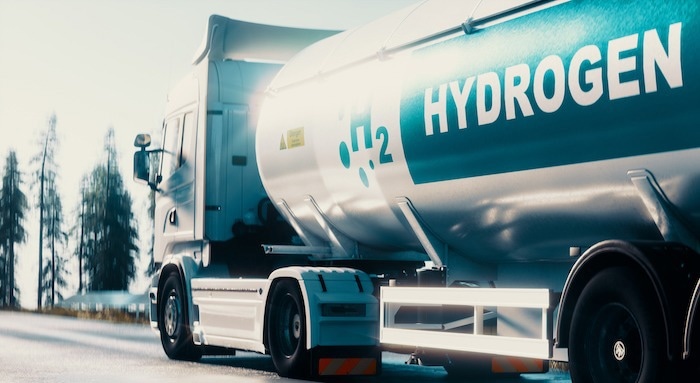Chemists from the University of Kansas and the US Department of Energy’s Brookhaven National Laboratory have made significant progress in splitting hydrogen and oxygen molecules to produce pure hydrogen without the use of fossil fuels.

Image Credit: The University of Kansas
The reaction mechanism for an important group of “water-splitting” catalysts has been revealed via pulse radiolysis studies. Scientists at KU and Brookhaven are getting closer to producing pure hydrogen from renewable energy, an energy source that could assist in a greener future for the nation and the world.
The findings will be published in the Proceedings of the National Academy of Sciences.
Understanding how the chemical reactions that make clean fuels like hydrogen work is very challenging—this paper represents the culmination of a project that I started in my very first year at KU.
James Blakemore, Study Co-Author and Associate Professor, Chemistry, University of Kansas
James Blakemore’s research in Lawrence forms the basis of the discovery.
Our paper presents data that were hard-won from specialized techniques to understand how a certain catalyst for hydrogen generation does the job. The techniques that were used both here at KU and Brookhaven are quite specialized. Implementing these allowed us to get a full picture of how to make hydrogen from its constituent parts, protons, and electrons.
James Blakemore, Study Co-Author and Associate Professor, Chemistry, University of Kansas
The discovery was built on Blakemore’s study at KU. He moved his work to Brookhaven for research at their Accelerator Center for Energy Research, where he used pulse radiolysis and other techniques. Brookhaven is one of just two places in the country with a pulse radiolysis experiment.
“It’s very rare that you can get a complete understanding of a full catalytic cycle. These reactions go through many steps, some of which are very fast and cannot be easily observed,” said Brookhaven Chemist Dmitry Polyansky, a co-author of the paper.
Blakemore and his co-workers made the discovery by investigating a catalyst that is based on a pentamethylcyclopentadienyl rhodium complex, which is [Cp*Rh] for short. The researchers concentrated on the Cp* (pronounced C-P-“star”) ligand coupled with the rare metal rhodium (hints from earlier research revealed that this combination would be appropriate for the study).
Our rhodium system turned out to be a good target for the pulse radiolysis. The Cp* ligands, as they’re called, are familiar to most organometallic chemists, and really chemists of all stripes. They're used to support many catalysts and can stabilize a variety of species involved in catalytic cycles. One key finding of this paper gives fresh insight into how the Cp* ligand can be intimately involved in the chemistry of hydrogen evolution.
James Blakemore, Study Co-Author and Associate Professor, Chemistry, University of Kansas
However, Blakemore emphasized that the discoveries could lead to other enhanced chemical processes in addition to producing clean hydrogen.
“In our work, we hope that chemists will see a study about how a common ligand, Cp*, can enable unusual reactivity. This unusual reactivity is relevant to the hydrogen story, but it's actually bigger than this because Cp* is found in so many different catalysts. Chemists normally think of catalysts as being based on metals,” the KU researcher added.
The researcher further adds, “In this way of thinking, if you're making a new molecule, the metal is the key actor that brings the constituent parts together. Our paper shows that this isn’t always the case. Cp* can be involved in stitching the pieces together to form products.”
Blakemore expressed hope that this research will pave the way for advancements in other catalysts and systems that depend on Cp* ligands. The finding, funded by the National Science Foundation and the DOE Office of Science, may have broader implications for industrial chemistry. Blakemore is now focusing on applying strategies similar to those employed in this study to develop novel approaches to nuclear fuel recycling and actinide species handling.
Graduate and undergraduate students at KU were also involved in the research that led to the discovery.
“This project was a very important training vehicle for students. Graduate student Wade Henke, the first author, is now at Argonne National Laboratory as a postdoc. Graduate student Yun Peng is the second author and kicked off the joint work with Brookhaven; both have now finished their Ph.D.s. Undergraduates also contributed to this project over the years, providing new complexes and insights that we used to frame the story that emerged in this paper,” stated Blakemore.
“All in all, I consider this a successful project and one that was a real team effort over the years,” Blakemore concludes.
Journal Reference:
Henke, W. C., et al. (2023) Mechanistic roles of metal- and ligand-protonated species in hydrogen evolution with [Cp*Rh] complexes. Proceedings of the National Academy of Sciences. doi.org/10.1073/pnas.2217189120.